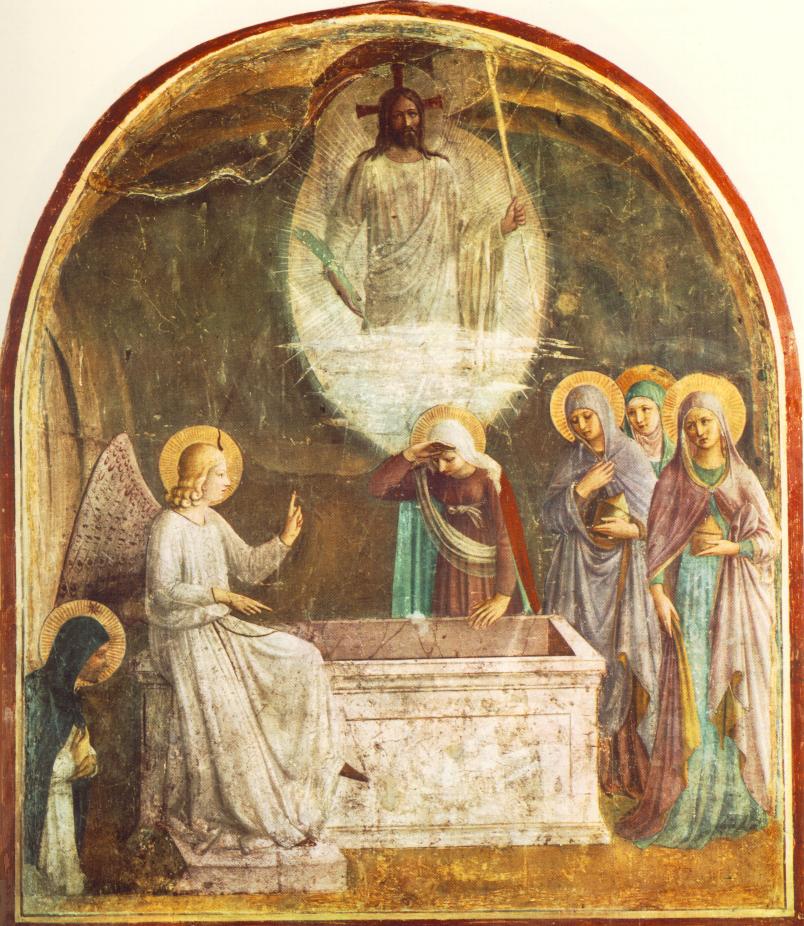Everyone on the fourth floor knew Maria. She was always rolling herself back and forth down the hall, babbling incoherently. She had lost, among many other things, the ability to speak English and Spanish. One can imagine how much distress and loneliness this caused her, so it’s no surprise that her babbles would sometimes become screams. The funny thing was, no one seemed to mind the noise. Her very presence had a way of causing people to open their hearts.
When I first started visiting, she generally recognized my presence and even was attentive when I would pray with her. But as her condition deteriorated, she was more and more withdrawn. The screaming became more and more frequent. She was obviously in great distress, yet no one was able to help her.
For a few weeks, she was in the hospital. I was worried that she had passed away. Eventually, when she came back, it was clear that she was not long for this world.
There she was in the hallway, screaming as helplessly as ever. She didn’t recognize that there was another person next to her. I tried to just be with her, to witness her pain. I hoped that she might recognize my presence, so that we could pray together. But she kept screaming just as before.
So I pulled the only trick I know for such situations: I just started the prayers of the rite. “In the name of the Father, and of the Son, and of the Holy Spirit +” Instantly she was silent, in rapt attention. So placing all my hope in God, I continued: “Our Father…”
It’s significant that I don’t remember what language I said that prayer in, English or Spanish (or some other language?). At that point of real communion of God, real prayer in the Spirit, different languages melt together anyway. It becomes not our own words in our own human languages, but truly the Lord’s prayer – the prayer of the Lord Himself, speaking within us both. The Lord was so clearly present in that prayer we shared. And at the end, she pronounced a hearty “Amen.” The first intelligible word I had ever heard her say in all my time of knowing her.
Then I presented the Host for adoration. “Behold the Lamb of God…” Her eyes were half as wide as her face, entirely fixed on adoring her Lord. At that moment it felt like the Lord was already present in her. “Holy things for the holy,” indeed. When I said the response “Lord, I am not worthy…,” I felt like I was speaking not for her but for myself.
She wasn’t able to actually receive communion, because she didn’t have enough coordination to open her mouth. I left, though, feeling as though she had shared communion with the Lord. I certainly had.
The next time I saw her, her condition was much worse. She was lying in bed. There happened to be a mat by the side of her bed, a sure invitation to kneel. Was I kneeling in recognition of the presence of the Lord in my pyx, or in recognition of the presence of the Lord in her person? I wondered.
She wasn’t able to remain focused in prayer this time. But I knew the Lord was with her. As I got up to leave, she grabbed my hand. I couldn’t easily pull myself away, so I knelt back down. A few minutes later, I tried again to leave, and she grabbed my hand once more.
It was so difficult to pull myself away as she screamed in some terrible agony – yes, physically difficult because of the unexpected strength of her grip, but even more difficult psychologically and spiritually. Still, I knew I had to leave (there was another miracle waiting to happen down the hall). My solace was this: she wasn’t really holding on to me, she was holding on to the presence of Jesus in me and on me. It is, after all, His ministry. It is really Him who visits every person and remains in them long after my body and spirit have left the room (if my spirit was even there in the first place).
Even if she couldn’t recognize that His presence was abiding in her just yet, I sure could. In that moment, perhaps the deepest that I had yet entered into her suffering, I was also sharing in the abiding presence. Praise be to You, Lord, with us in the lows just as much as in the highs.
The next time I visited, Maria did receive Communion (although she wasn’t able to ingest the entire Host). This gave me great satisfaction. After all of the deep communion with God that she had experienced, she had finally received Him in His fullness. “Lord, now you let your servant go in peace…”
I felt as if I had been dismissed in peace. Even the need to reverently dissolve the regurgitated portion of the Host could not make me anxious or distract me from the eternal praise of God. Apparently she too was dismissed in peace, because a few days later she was called from this world. May she who bore the Lord’s sufferings in this life share in His glory forever. Rest in peace, Maria +


